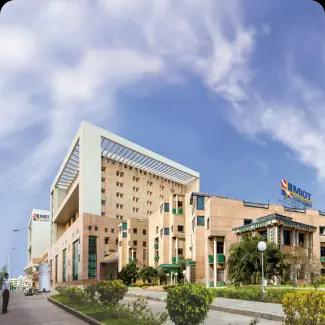
Tubal Ligation
Tubal ligation, commonly known as "getting your tubes tied," is a surgical procedure used as a permanent form of female contraception. By blocking or severing the fallopian tubes, it prevents sperm from reaching and fertilising eggs, offering a highly effective means of preventing pregnancy.
Free Pick up and Drop
No Cost EMI
Post Surgery Care
Tubal ligation, commonly known as "getting your tubes tied," is a surgical procedure used as a permanent form of female contraception. By blocking or severing the fallopian tubes, it prevents sperm from reaching and fertilising eggs, offering a highly effective means of preventing pregnancy.
Symptoms Of Tubal Ligation
Symptoms
Types of conditions
There are two main types of Tubal Ligation
Laparoscopic Tubal Ligation
Laparotomy Tubal Ligation
Laparoscopic Tubal Ligation
This is the most common type of tubal ligation. It is a minimally invasive procedure that is performed through small incisions in the abdomen.The tubes can then be blocked or removed using a variety of techniques, such as clips, bands, or cautery.
Here are some of the different types of laparoscopic tubal ligation procedures:
- Bilateral salpingectomy: This is the most effective type of tubal ligation. It involves removing both fallopian tubes entirely.
- Clip application: Clips are placed on the fallopian tubes to block them.
- Band application: Bands are placed on the fallopian tubes to block them.
- Cauterization: An electrical current is used to seal the fallopian tubes.
When to consider Tubal Ligation
There's no one-size-fits-all answer to this question. The best time for tubal ligation depends on your individual circumstances. Here are some factors to consider:
-
Your desire for children: Are you absolutely sure you don't want to get pregnant in the future? Tubal ligation is a permanent procedure, so it's important to be certain of your decision.
-
Your age: Regret rates tend to be higher among younger women who undergo tubal ligation.
-
Your overall health: Talk to your doctor about any health conditions you have that could increase your risk of complications from surgery.
Here are some additional things to keep in mind:
-
Tubal ligation can be performed during a C-section, after childbirth, or as a separate surgical procedure.
-
It's a relatively safe and effective procedure, but there are some risks associated with any surgery, such as infection and bleeding.
-
Tubal ligation is not 100% effective in preventing pregnancy. There is a small chance that the tubes could reopen or that a pregnancy could occur outside the uterus (ectopic pregnancy).
If you're considering tubal ligation, talk to your doctor about the pros and cons to see if it's the right choice for you.
Tubal ligation, commonly referred to as "having your tubes tied," is a surgical procedure performed for female sterilisation. It involves blocking or sealing the fallopian tubes to prevent eggs from reaching the uterus for fertilisation. This procedure is considered a permanent method of birth control. Here's an overview of the procedure, including preparation, the surgery itself, and what to expect during recovery.
Preparation for Tubal Ligation
Before undergoing tubal ligation, you'll have a consultation with your doctor to discuss the procedure, its risks, benefits, and any alternatives. You might undergo a physical examination, and your medical history will be reviewed to ensure you're a good candidate for the surgery. You may be advised to stop eating or drinking for a certain period before the surgery and to arrange for someone to drive you home afterward.
During the Surgery
Tubal ligation is usually performed under general anaesthesia, so you won't be awake during the surgery. The specifics of the procedure depend on the method used:
- For laparoscopic tubal ligation, the surgeon inflates your abdomen with gas (carbon dioxide or nitrous oxide) to create space to work. They then insert a laparoscope and instruments to cut, tie, clamp, band, or seal the fallopian tubes.
- For a mini-laparotomy, a slightly larger incision is made, and the tubes are tied off or sealed without the need for gas inflation.
- Hysteroscopic sterilisation doesn't require incisions but involves placing a device or agent into the fallopian tubes via the cervix.
Recovery
Recovery times can vary depending on the method used and the individual's health. For laparoscopic procedures, recovery is typically quicker, with many people returning to normal activities within a few days. You may experience some pain, dizziness, fatigue, or abdominal discomfort post-surgery, which usually resolves within a week.
Risks Factors
While it is a highly effective means of preventing pregnancy, like any surgical procedure, it comes with its own set of risk factors and potential complications. Here are some of the primary risk factors associated with tubal ligation:
Surgical Risks:
- Infection: Any surgery can introduce bacteria into the body, leading to infection at the incision site or internally.
- Bleeding: There's a risk of bleeding during or after the procedure, though serious blood loss is rare.
- Damage to surrounding organs: There's a small risk of damage to nearby organs such as the bladder, bowel, or blood vessels during surgery.
- Anaesthesia complications: As with any procedure requiring anaesthesia, there's a risk of complications related to the anaesthesia itself, including allergic reactions or respiratory issues.
Specific Risks and Complications
- Ectopic pregnancy: If pregnancy occurs after tubal ligation, there's an increased risk that it will be ectopic (outside the uterus), which can be life-threatening.
- Regret: Some women experience regret after the procedure, especially if their life circumstances change. Reversal is possible but complicated and not always successful.
- Incomplete closure: There's a slight risk that the fallopian tubes can rejoin or were not completely sealed, leading to unintended pregnancy.
- Post-tubal ligation syndrome (PTLS): There's controversy around PTLS, with some women reporting a variety of symptoms including menstrual irregularities and pelvic pain. However, scientific evidence does not strongly support PTLS as a widespread issue.
Long-term Health Considerations
- No protection against STDs: Tubal ligation does not protect against sexually transmitted diseases (STDs).
- Possible long-term effects: There's ongoing research into the long-term health effects of tubal ligation, including its impact on ovarian function and the risk of ovarian cancer. Findings are mixed, and more research is needed to draw definitive conclusions.
Who May Be at Higher Risk
- Underlying health conditions: Women with certain pre-existing health conditions may face higher risks from the surgery or anaesthesia.
- Obesity: Higher body mass index (BMI) can increase the risk of complications during any surgery, including tubal ligation.
- Smoking: Smoking can increase the risk of surgical complications and slow down the healing process.
It's important for anyone considering tubal ligation to discuss all potential risks and benefits with their healthcare provider. This conversation should include an assessment of personal health history, reproductive goals, and alternative methods of contraception that might be more suitable depending on individual circumstances.
Aftercare and Follow-up
Your doctor will provide specific instructions on how to care for the surgical site, what activities to avoid, and when to resume normal activities. Pain can often be managed with over-the-counter pain relievers. A follow-up appointment is usually scheduled to check your recovery progress. It's important to note that while tubal ligation is highly effective in preventing pregnancy, it doesn't protect against sexually transmitted infections (STIs). Also, there's a very small risk that pregnancy can still occur if the fallopian tubes rejoin over time. Deciding on tubal ligation is a significant decision that should be made after careful consideration and discussion with your healthcare provider, considering all aspects of your reproductive health and future family planning desires.
Your journey to good health begins here

Accredited Hospitals
Nationally accredited hospitals for high-quality care

Multi-language Support
Convey your needs in the language you're most comfortable in

Travel Booking Assistance
Seamless booking assistance for your healthcare journey

Personalised Treatment Plans
A treatment journey tailored to all your preferences and needs

Unparalleled Hospitality
Experience exceptional hospitality during your stay

Easy Medical Visa Approvals
Dedicated assistance for medical visa requirements
Plan your healthcare journey with Karetrip!
India’s Best Hospitals are Partnered With Karetrip
Access World-Class facilities from top Hospitals across India
Consult with India’s most experienced doctors
Experience premium care from India’s leading specialists

Dr. Alka Kriplani
Gynaecologist and Obstetrician
41+ Years Of Experience

Dr. Arwa Mohsin E
Obstetrician and Gynecologist
22+ Years Of Experience

Dr. Meenakshi Ahuja
Obstetrics & Gynaecology
36+ Years Of Experience

Dr. Rajesh Helavar
Obstretician And Gyneacologist
19+ Years Of Experience

Dr. G Usha Reddy
Gynaecologist & Obstetrician
33+ Years Of Experience

Dr. Poonam Rastogi
Obstetrician and Gynaecologist
31+ Years Of Experience
Cost Estimation
Learn about the expenses involved in the procedure and what factors affect them.

Estimating the cost of surgery involves several factors, including the type of procedure, hospital fees, surgeon's charges, and additional expenses such as anesthesia and post-operative care. Costs can vary widely based on location and the complexity of the surgery. It's essential to consult with healthcare providers, discuss insurance coverage, and inquire about potential out-of-pocket expenses to ensure a comprehensive understanding of the financial aspects associated with the surgical procedure.
The average cost of the Tubal Ligation in India is around ₹50,000 to ₹1,50,000.

₹1,50,000
High Cost
₹1,00,000
Average Cost
₹50,000
Low Cost
The LIST of AVERAGE COST of the Tubal Ligation across TOP 9 cities in India in Indian Rupee (INR) is as follows :
City
Lowest Cost
Average Cost
Highest Cost
Kochi
30,000
45,000
50,000
Mumbai
40,000
55,000
70,000
Dlehi NCR
35,000
40,000
60,000
Bengaluru
30,000
46,000
55,000
Chennai
25,000
30,000
45,000
Hyderabad
22,000
36,000
40,000
Kolkata
15,000
18,000
20,000
Rajasthan
22,000
35,000
40,000
Ahmedabad
15,000
18,000
20,000
Commonly Asked Questions
What is tubal ligation, and how does it work?
Tubal ligation is a surgical procedure that prevents pregnancy by either cutting, tying, sealing, or otherwise blocking the fallopian tubes. This prevents sperm from reaching an egg for fertilisation.
How effective is tubal ligation at preventing pregnancy?
Tubal ligation is over 99% effective at preventing pregnancy. It's considered a permanent form of birth control, although there is a very small risk of pregnancy if the tubes grow back together over time, a phenomenon known as recanalization.
What is the procedure like? Is it invasive?
Tubal ligation can be performed in various ways, including through a minimally invasive laparoscopic procedure, which involves small incisions and the use of a camera to guide the surgery. There's also a mini-laparotomy, which requires a slightly larger incision. The specific method depends on individual circumstances and the surgeon's recommendation.
What is the recovery time after tubal ligation?
Recovery times can vary, but many women go home the same day of the surgery and return to normal activities within a week. However, it may take a few days to a week to fully recover from the anaesthesia and the procedure itself.
Are there any risks or side effects associated with tubal ligation?
As with any surgery, there are risks, such as reactions to anaesthesia, bleeding, infection, or damage to surrounding organs. Long-term side effects are rare but can include changes in menstrual patterns for some women.

Do you still have a query?


"I had a successful surgery at Fortis Escorts Hospital, and it was all thanks to Karetrip's help in finding the right hospital for me. The entire process was smooth and stress-free, with Karetrip handling all the arrangements and answering any questions I had. The medical team at the hospital was outstanding, and the facilities were top-notch. I highly recommend Karetrip to anyone looking for a tension-free healthcare experience."
Read MoreFatima
Chattogram


"Thanks to Karetrip, I got connected with MAX Hospital in New Delhi. The team guided me through every step – from finding the right doctor to handling travel and visas. They made a daunting process feel like a breeze. The care I received at MAX Hospital was outstanding, and I can't thank Karetrip enough for making it possible. They truly put patients first and go the extra mile to ensure a smooth healthcare journey. I'm grateful beyond words!"
Read MoreHasan
Dhaka


"At first, I was unsure about having a medical procedure done in a foreign country. However, Karetrip's team at Indraprastha Apollo Hospital made me feel much better. The hospital was very clean, modern, and had everything they needed to help me. The staff were very kind and did everything they could to make me feel comfortable. I'm really happy with how my treatment turned out, and I appreciate Karetrip for making it easy and stress-free."
Read MoreImran
Sylhet
 Google Reviews4.9/5
Google Reviews4.9/5




I had a successful surgery at Fortis Escorts Hospital, and it was all thanks to Karetrip's help in finding the right hospital for me. The entire process was smooth and stress-free, with Karetrip handling all the arrangements and answering any questions I had. The medical team at the hospital was outstanding, and the facilities were top-notch. I highly recommend Karetrip to anyone looking for a tension-free healthcare experience.
Fatima
Chattogram
 Google Reviews4.9/5
Google Reviews4.9/5



















